Photo

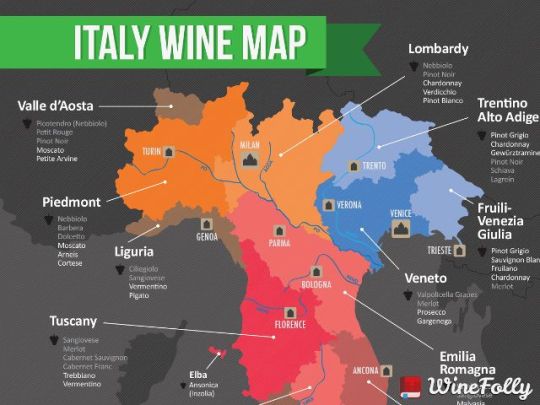

Meet our Newest Wine: Scarbolo Pinot Grigio
The grape: Pinot Grigio
Pinot Grigio is a popular grape that is planted widely. It likely originated in France, where it is known as Pinot Gris, from the ancestral Pinot grape. It is grown in northern Italy in Friuli Venezia Giulia, among other places. The resulting wine from this region can be heavenly. Flavors are sharp and concentrated, fruits include peach, pear, and apple. Almonds and honey might be found, and there is a strong backbone of minerality. These are elegant and distinctive wines.
The wine: Scarbolo Pinot Grigio from Friuli Grave DOC
100% hand-harvested Pinot Grigio. It’s aged on the lees for 6 months, which gives it a creamy texture and added depth. The wine has the crisp minerality and fullness of fruit for which the area is known, along with fuller, honeyed notes. This is a delightful wine from the famed Scarbolo estate, which is found in Friuli Venezia Giulia, near the border with Slovenia.
Fun fact: Scarbolo is located in the town of Lauzacco, in Pavia di Udine. Lauzacco lies roughly equi-distant from the two, important, Roman towns of Forum Iulii (Cividale del Friuli) and Aquileia; the two succeeded each other as primary Roman centers in the 1st half of the 1st millennium AD. The whole area formed the Empire’s northeastern frontier, and was thus in the path of invading Longobards, Visigoths, and Ostrogoths, the former of whom made Cividale the first capital of their Lombard Kingdom. It has episodically been part of the Roman, Lombard, Byzantine, Venetian, Lombard-Venetian, and Italian Kingdoms/Empires/Republics.
#Scarbolo#Pinot Grigio#Friuli Grave#friuli venezia giulia#wining archaeologist#Jet Wine Bar#wine in philly#wine and history
1 note
·
View note
Photo

Our 4th Annual Ides of March wine tasting!
Les Granges Paquenesses Savagnin La Pierre 2011, Jura
La Collina Lambrusco dell Emilia Il Quaresimo IGT 2011, Emilia-Romagna
Cantore di Castelforte Di Manduria Es Primitivo DOC, Puglia
Cremisan Cellars "Star of Bethlehem" Hamdani/Jandali , West Bank
Emilio Hidalgo Gobernador Oloroso Seco DO, Jerez
March 15th, 6:30-8:30
Get tickets here.
2 notes
·
View notes
Photo

Add an extra spark to your Saturday!
Come out for one of our favorite, luxury, sparkling-wines- so tasty and well-priced you’ll want 2 And, when you buy a bottle and mention this post, you get a free order of deviled eggs or bruschetta.
Saturday’s list:
Steininger Sekt Sparkling Riesling from Kamptal, Austria $53/bottle
Domaine Belluard Vin de Savoie "Les Perles du Mont Blanc” Brut from Savoie, France $49/bottle
La Collina Lambrusco Dell'Emilia Quaresimo from Emilia Romagna, Italy $39/bottle
1 note
·
View note
Photo
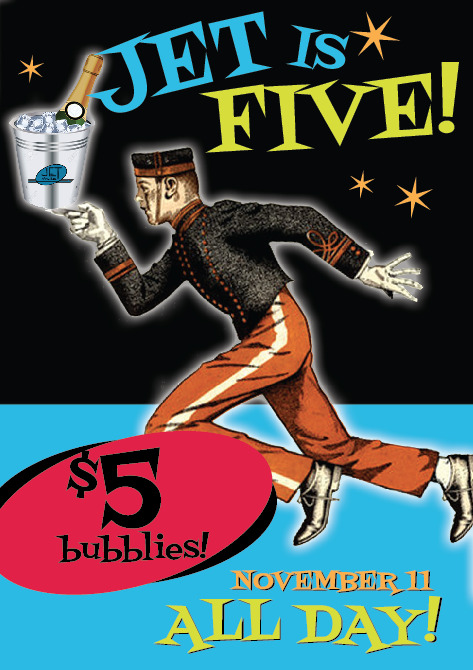
0 notes
Photo
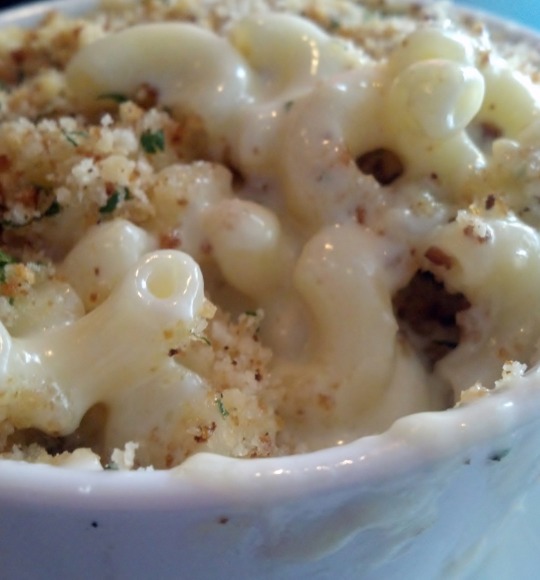
Yes. Mac ‘n Cheese is back. #WelcomeToFall
2 notes
·
View notes
Photo


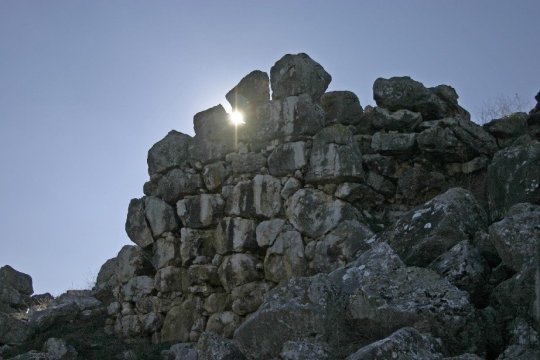
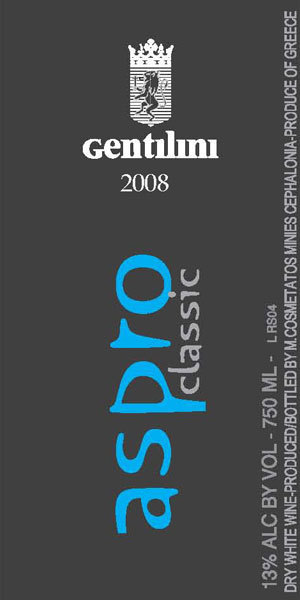
Meet Our New White Wine: Gentilini Aspro
The Grape(s): Tsaoussi is native to the island of Kefalonia, Greece, where it is both a table grape and a wine grape. The berries are large, and produce wine that is aromatic and low in acid. Muscat is another Kefalonia native. This grape loves the sun. It has small berries, and produces very aromatic wines. Sauvignon Blanc originated in Bordeaux. This green-skinned grape yields wines with acid, structure, and vegetal and citrus notes.
The Wine: Gentilini Aspro 2012 is a blend of 40% Taoussi, 30% Muscat, and 30% Sauvignon Blanc. Each grape varietal is sourced from a different, certified-organic vineyard (and micro-terroir) on Kephalonia, near the sea. Each is fermented separately in stainless steel before being blended together. The wine is medium/light in weight, with plenty of aromatics that hit the nose with soft flowers, citrus, melon, and spice. It has great complexity, a honeyed finish, and great salinity.
Fun Fact: Kephalonia has a long history, and one that is preserved in numerous, substantial archaeological finds across the island. These real ruins reflect that history, and also allude to Greece’s strong, mythological past. Unsubstantiated claims suggest that Kephalonia, itself, may have been the ancient Ithaca of Homeric legend, and that the massive and wealthy tombs at Tzanata housed the legendary leader, Odysseus. In Homer’s story, Odysseus’ journey back to Ithaca led him through many obstacles and monsters, including the giant, one-eyed Cyclops. “Evidence” for the mythical Cyclops also exists on Kephalonia, at Krani. There lie the remains of walls with stones so large that they *must* have been built by those giants.
Available now at Jet Wine Bar, 9.5/glass. Drink it with guacamole for a perfect pairing!
#Gentilini#Aspro#Tsaoussi#Muscat#sauvignon blanc#Cephalonia#Kephalonia#Jet Wine Bar#Cyclops#odysseus
2 notes
·
View notes
Photo

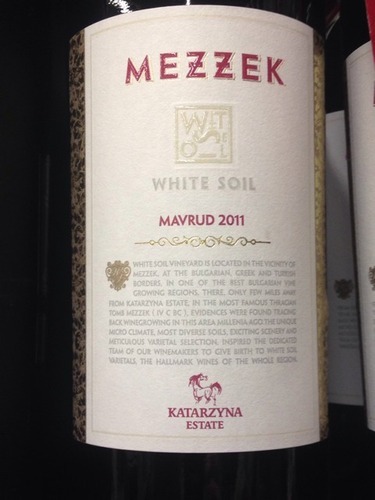
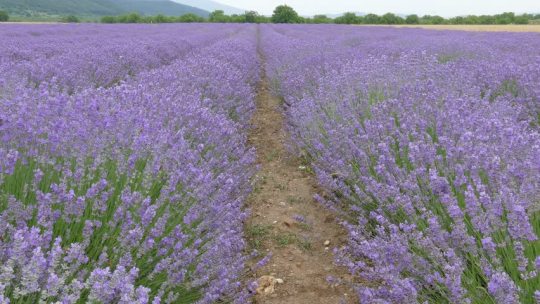
Take a trip to Bulgaria... from your bar stool!
Katarzyna Vineyards Mezzek Mavrud - followed soon by their Cabernet Sauvignon/Mavrud blend. Bulgaria is a major producer of lavender - and you can tell! In addition to lavender, these well-structured and unique wines ample cherry and white pepper notes. Drink now, and try with our lomo skewers!
2 notes
·
View notes
Photo
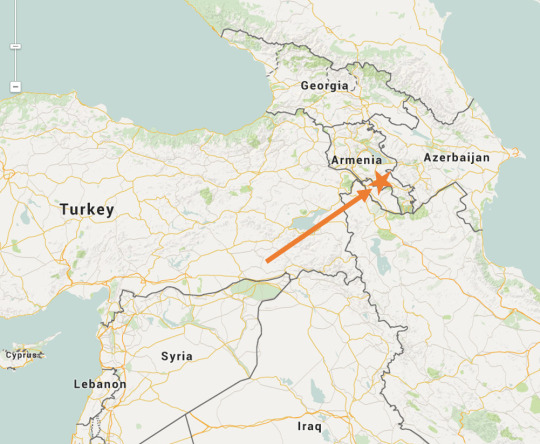

Where is Vayots Dzor, and why does it matter???
Well, it is in southeast Armenia, and it is home to some of the earliest evidence for wine-production (more here)! It is also home to the Areni grapes used in this Vedi Alco wine. It is a favorite of mine for these early fall days. The wine is juicy, fruity, and earthy. It drinks a bit like a Portuguiser, but with more wild herb, and a touch darker. GET IT NOW!!!
$9/glass, perfection with our turkey burger.
0 notes
Photo


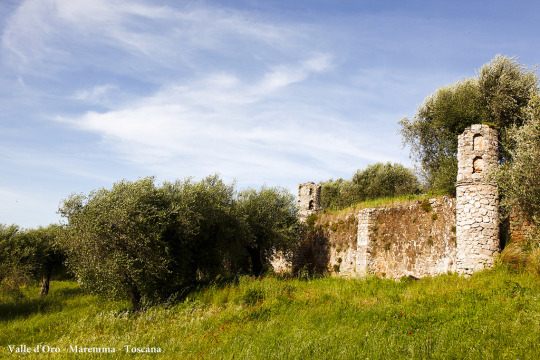
Meet our new Red: La Corsa Aghiloro
The Grape(s): Sangiovese, Teroldego, and Petit Verdot. Sangiovese is the primary red-grape of Tuscany – whether called by that name or by Morellino or by Brunello. It features prominently in many of the region’s red wines, supplying their characteristic sour cherry and savory notes, relatively high acid and medium body. Teroldego, on the other hand, is rarely grown in Tuscany and is largely associated with the Trentino/Alto Adige regions. The grape typically produces wines with darker fruits and aromatic spices, and which bear northeastern Italy’s characteristic acidity. Petit Verdot is decidedly not Italian; its origins are in Bordeaux, on the Gironde. But, it’s a fantastic grape with oodles of structure and lovely “purple” notes of violets, and pretty, white flowers on the nose. It is one of my favorite grapes – whether as a single varietal or in a blend. I have rarely met a Petit Verdot that I haven’t liked. In addition to La Corsa’s use of the varietal, I have tasted an amazing single-varietal PV from Pennsylvania’s Stargazers Vineyard, and have recently sought it out in Argentina with great results.
The Wine: La Corsa Aghiloro, IGT Toscano Rosso, Maremma Italy. La Corsa was founded in 2005, but already is producing wines of very fine quality. They cultivate roughly 18 acres of land, some 6 km from the Tyrrhenean Sea. This wine is an estate-blend of 33% Sangiovese, 33% Petit Verdot, and 33% Teroldego. It is aged ca 10 months – 8 months in stainless tanks and 2 in bottle. This blend is quite unique for Tuscany, and the wine has flavors and qualities from each grape, resulting in a very complex wine with notes of blackberry and cocoa, in addition to cherry, violet, and dried herbs.
Fun Fact: La Corsa is in Orbetello province, near the southern border of Maremma (Tuscany). It is located quite near to the Roman colony of Cosa , founded in the 3rd century BC. After its founding, the colony expanded with a port and fishery on the nearby Tyrrhenean Sea. From that port, large amounts of wine and fish-products such as garum were shipped elsewhere – to Rome and also further afield to Gaul. Around Cosa and its port surface numerous commercial villas, which produced large quantities of wine. One of these is Settefinestre, a slave-run villa founded ca 40 BC just on the outskirts of La Corsa’s estate. It is estimated that Settefinestre produced over 1.2 million liters of wine, per year*. In homage to that history, La Corsa makes a wine called Settefinestre, made with 100% Sangiovese.
Come enjoy this wine, now at Jet for $9/glass. Have it with our hot dog!
____________________________
*TW Potter 1987 Roman Italy (London : British Museum), pp 108.
0 notes
Photo

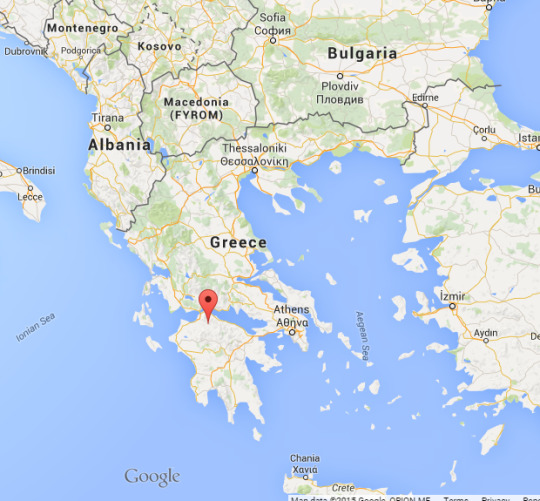
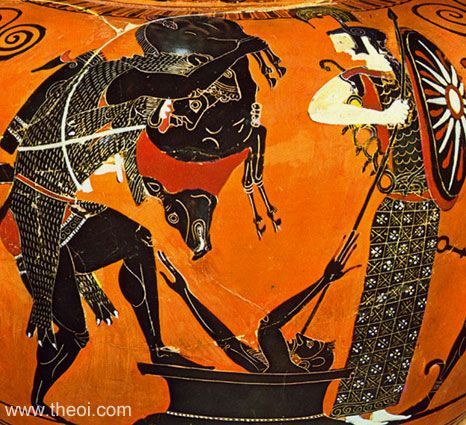
Meet our newest Greek wine, Tetramythos Black of Kalavryta
The Grape: Black of Kalavryta (or Mavro Kalavritino). The berry color is black – thus the first part of the name. The grape is grown in the Peloponnese, only in the mountainous region of Achaia where its namesake village is located. That village, Kalavryta, has an unfortunate and dark footnote in the annals of WWII. The grape’s characteristic notes are strawberry and earth – which come out in full force in Tetramythos’ offering.
The Wine: Tetramythos Black of Kalavryta
Tetramythos makes this wine with 100% Black of Kalavryta. While the grape, itself, is relatively rare, single varietal productions are almost unheard of. Tetramythos is a relatively new company, only starting in 1999. The have 14 hectares under vine, ca. 600-1000 meters above sea level. This wine is distributed in Philadelphia through Joe Brandolo’s new company, Urban Earth Wines. Joe focuses on producers whose grapes are sustainably grown and whose wine has minimal intervention in the production process; Tetramythos wines fit this bill. The wine is deliciously different. It has a notes of wild strawberry, sour cherry, and beef broth, with a black pepper finish.
Fun Fact:
Tetramythos is found in the mountainous region around Mount Erymanthos and Mount Aroania, on whose slopes Tetramythos’ vines are planted. Mount Erymanthos is the mythical home of the Boar of Erymanthos, which Hercules was tasked with killing as one of his penitential labors. But, before he could even get to the task of the boar, he enraged the local Centaurs by drinking their wine. It was only after defeating the (justly!) upset Centaurs that he got to the task of slaying the boar.
Tetramythos Black of Kalavryta is available now at Jet for $9/glass.
Try it with our steak montadito or a cheese plate.
2 notes
·
View notes
Photo


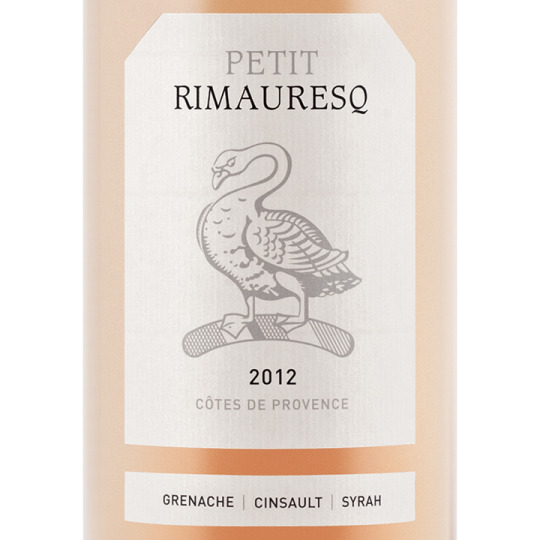
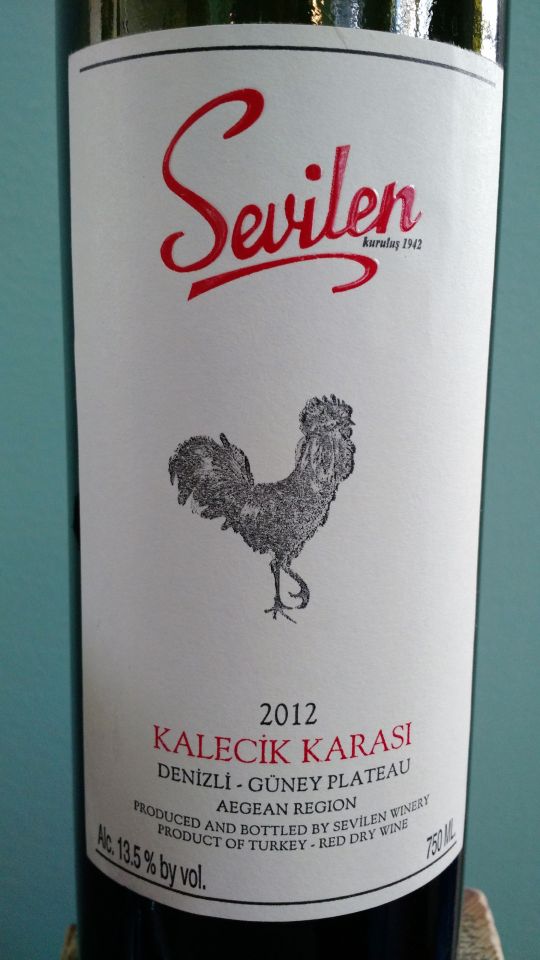
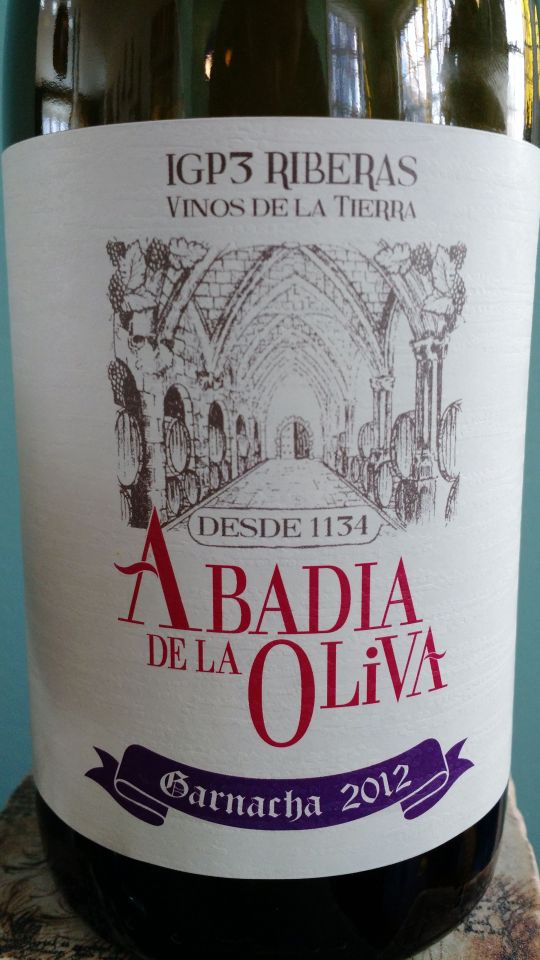
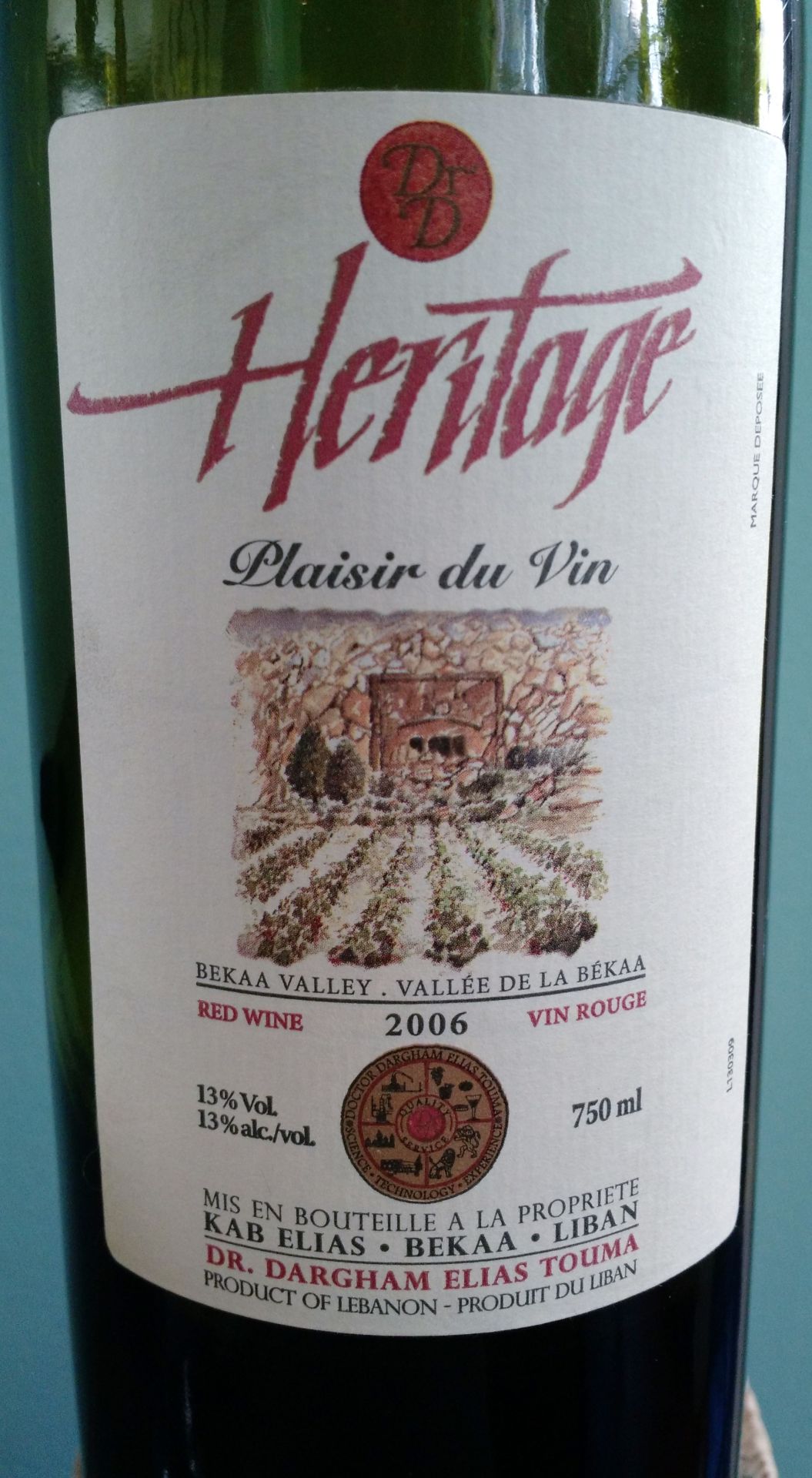


Tasting Recap: The Ides of March
While the “Ides” were merely the 15th day of each month, it was a fateful Ides of March, 44 BC, that Julius Caesar was assassinated. How apt that the tragedy of Caesar should unfold in the shadow of the Theatre of Pompey; it was its benefactor, Pompey the Great (Gnaeus Pompeius Magnus), with whom Caesar once ruled and later vanquished. The lives, battles, and deaths of these two men were critical for the end of the Late Republic, and the subsequent rise of Empire. The wines chosen for this tasting come from lands of significance to that history.
Why wines? Well, look at the map! The Romans annexed and amassed land in some of the finest wine regions in the world. Certainly wine production in the Mediterranean pre-dates the Roman Republic. Early production in the Caucuses (particularly modern Georgia, Armenia, Iran) spread westward, reaching the further shores of the Mediterranean with the aid of sea-faring Phoenicians and Greeks. Etruscans, with their base in Tuscany, certainly knew a thing or two about wine and planted many vineyards. The acquisition of fine lands and vineyards by wealthy Romans – and the labor to work them – resulted in large-scale production and consumption of wine. Moreover, the confluence of so many lands and traditions resulted in the dissemination and the collection of techniques and skills from all over the known world, many of which were collated by Cato and Pliny. Some of these are still in use today.
****************************************
The Region: Macedonia
Macedonia comprised what is now northern Greece (including Macedonia and Thrace) and much of modern Albania and Macedonia. It was always an important buffer between the Greeks and attacking European tribes – of which Rome became one following the city-states support of Mithridates in 88 BC. Control of Macedonia by the Romans made it a conduit through which they could better tax and watch the Greeks. It also has great significance in the life of Caesar, as it was in Macedonia that Pompey suffered his defeat to Caesar’s allies in 48 BC, at the Battle of Pharsalus. The wine selected is from the Pelopennese, which was technically Greek.
The Wine: Nasiakos Moschofilero 2013, Greece
Owned by Leonidas Nasiakos, this small winery produces 6500 cases of Moschofilero. Mr. Nasiakos is recognized for his Moshofilero production, and serves as the only consultant for that grape to the Greek Wine Federation. The grape is indigenous to the Pelopennese, grown especially in Mantinia. At the heart of Mantinia is Arcadia, where the winery is located. This is a bucolic, mountainous region and the winery’s grapes are grown at 2000 ft above sea level. This is a lovely wine. The nose is lightly floral and spicy, with orange blossoms and a hint of white pepper. The mouth is minerally and dry, with flavors of apricots and other mountain fruits, and brine from the sea air. It has a medium body and relatively long finish – though it sits mostly in the back of the palate. This was the favorite of our tasters, with 6 or 17 votes!
The Region: Gaul
Gallia Transalpine was a province of Rome that included the French wine regions now known as Provence and the Rhone. It was one of Rome’s earliest provinces, which led it to initially be called Nostra Provincia, or just Provincia. This name survives in the modern French name, Provence. Along with Gallia Cisapline and modern Languedoc-Roussillon, the province became known as Gallia Narbonensis, with its capital at Narbonne. It was upon returning from his governorship in Gaul in 49 BC that Caesar cast the proverbial die and crossed the Rubicon into Italy proper at the head of one of his legions, in clear contravention of Roman law. This act led to Pompey’s retreat from Rome and the beginning of Caesar’s Civil War and pursuit of Pompey across the Roman world.
The Wine: Domaine Rimauresq Rosé 2013, France
Domaine Rimauresq is a cru-class estate of the cotes du Provence sub-region. The winery was established in 1882, following the Phylloxera epidemic, and was already winning awards by 1885. The vineyard lands have multiple soil types and terroirs in small plots, resulting in great complexity. Their vineyards contain 9 different types of grapes, of which three are made into this rose: Grenache, Cinsault, and Syrah. This rose is make through cold-maceration on the skins for several hours. The wines are left on the lees for a time, filtered, and bottled. The nose is subtle, clean, and full of minerals. It has nice, light acid and a firm mouth. Fruits are very subdued, with paler fruits like melon. Very nice wine. As usual, there was much shock at how enjoyable is a good, dry rosé! Nearly all of our tasters like this wine, but felt it was the most “neutral” to the palate.
The Region: Asia
Asia first consisted of lands in western Turkey bordering the Aegean. Romans spread through Asia Minor through both purchase and usurpation of land. While the lands were not directly controlled by Rome, they were exploited for taxation, people, and produce. Pompey added greatly to Roman lands in Asia, with the annexation of Bithynia and Pontus along the Black Sea and, importantly, Cilicia along the Mediterranean Coast. From there, Pompey had a land bridge through western Turkey as an important step in the annexation of the province of Syria, accomplished by Pompey in 64 BC.
The Wine: Sevilen Guney Kalecik Karasi 2011, Turkey
The winery was established in 1942 in the coastal city of Izmir, bordering the Aegean. The winery now has vineyards in this Mediterranean micro-climate, as well as grapes from the higher-altitude Güney plateau, which has a continental climate. Kalacik Karasi is one of several hundreds of indigenous grapes of Turkey – indicative of its place near to the domestication of the Vitis vinifera wine grape. The grape is named for the Kalacik region near Ankara. The grapes for this wine are from Sevilen’s Güney vineyards.This is a lighter bodied wine with higher acid – in the same vein as a gamay or pinot noir. The nose has a little bit of earth and funk, and a touch of celery and prune. Fruits are ripe (think California Pinot Noir), and prune continues in the mouth. After some “breathing”, the prune turns to cherry on the nose and in the mouth. This wine was enjoyed by most of our tasters, though some thought it was a bit “monotone” in character.
The Region: Hispania
In the late Republic, Hispania consisted of H. Citerior and H. Ulterior – which together only covered a portion of Iberia. As with many of the provinces, its import lay as communication routes to important places and ports, and as access to as-yet-unconquered lands. Hispania, in particular, provided buffer between North Africa (and Carthage) and Rome. Hispania Citerior was also significant for Caesar as another place in which his armies bested those of Pompey, specifically in the battle at Ilerida in 49 BC. The near constant fighting in Hispania (and elsewhere with the general Pax Romana) ceased following Augustus’ reorganization of the Provinces ca 13 BC. At that time, Hispania Citerior was subsumed by Hispania Tarraconensis, with its capital at Tarragona.
The Wine: Abadia de la Oliva Garnacha 2012, Spain
The winery is located in the Basque region of Navarra, in the foothills of the Pyrenees. Its lands are strongly connected to Cistercian monks who once lived in Burgundy, before being recalled to Navarra. With this Cistercian past, the Abadia domain is the longest, continually operating winery in Spain, in operation for almost 900 years. Cistercians periodically made wine on these lands until 2009, at which time the land was leased to Abadia. The hot, dry climate is perfect for garnacha, from which this wine is made.This is a bigger, fuller-bodied wine. The nose has both tart- and black- cherries, and some wet clay and funk. The mouth is rich with ripe, wild strawberries and raspberries; there is a lot of fruit. Acid and tannin are noticeable, but it is a little soft on structure. This was the second-favorite red of the evening. Our tasters enjoyed its richness, but a few found it to be “too simple”.
The Region: Syria
Much like its Asian province, Romans exploited Syria for resources. Syria provided soldiers for protection of the eastern frontier, important as a buffer to the Parthians. Syria, in general, and the Bekaa Valley, in particular, served as a “bread basket” for Rome. Grains and all sorts of other goods were shipped out of ports on the eastern Mediterranean. Lebanon, proper, became more integrated into the Empire than it had been in the Republic. This is visible in its modern ruins, like temples for Jupiter and Bacchus, many of which are attributable to Augustus – Caesar’s adopted son, Octavian.
The Wine: Chateau Heritage Plaisir du Vin 2006 Lebanon
Wine making has occurred in the Bekaa Valley for millennia. The lands of Chateau Heritage have a modern history dating to 1888, when the Touma family established a winery and Arak distillery. Following on their heels, Chateau Heritage was established and released its first modern wines – with international grapes – in 1997. The Plaisir is made from Cabernet Sauvignon, Syrah, and Cinsault, aged 6 months in oak. This wine is much older than the others we tasted (2006 vintage) and that was noticeable in the notes of prune. These mixed with date and fig to give the wine a rich, deep, funky nose. These same flavors are in the mouth, along with some black olive and black cherry. Balanced tannin and acid, persistent finish. This was the favorite red amongst our tasters and the second-favorite wine of the evening.
#Roman Republic#Gaul#Asia#Hispania#Syria#Macedonia#Caesar#Pompey#Ides of March#Jet Wine Bar#wining archaeologist
2 notes
·
View notes
Photo




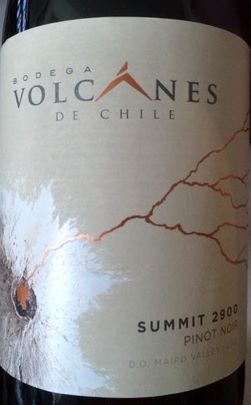

Wine-making Women
It is neither unusual nor unexpected for women to findcareers in wine. However, their general trajectory seems to follow the dictum that the higher the profile of the position, the lower the proportion of women that fill the position. So, where there are many women in ownership, management, consultant, accountant, and marketing roles, there are fewer in the role of winemaker. Thus, we highlight three, female winemakers from among the wines that we pour.
Susana Balbo, winemaker
Our Wine: Crios Rose of Malbec, Argentina
Susana Balbo is a grande dame of Argentinian winemaking. She has been practicing her craft for decades, after earning her enology degree in 1981. She has been a boon for Mendoza and Argentina, becoming the first Argentine winemaker to serve as a consultant for production in other countries. The current popularity of Torrontes might be attributed to Susana’s involvement with the grape at the Michel Torino winery, where she focused on the grape’s floral bouquet and citrus body. Crios is an “offspring” line of her Dominio del Plata Winery (literally, “Crios” means “offspring”). Read a bit more about her, here.
Meredith Smith, winemaker
Our Wine: Sawtooth Pinot Gris, Idaho
Meredith is a relative newcomer to the world of wine. She traded in a career in Real Estate Development and Accounting for professional viticulture certification. After just 3 years in the world of wine, she was promoted to Associate Winemaker in 2012, and now heads the Sawtooth lines. Given the commercial youth and potential for growth of this region that shares an AVA (Snake River Valley) with its neighbors to the west in Oregon, Meredith could shape new styles of American wine.
Maria del Pilar Diaz, winemaker
Our Wine: Bodega Volcanes de Chile Pinot Noir, Chile
Maria is another young woman in this career. Winemaking is not new to her, though, as her mother, Pilar González, was an important winemaker in Chile. Like most winemakers, she has worked with- and learned from- producers all over the world. She has a strong interest in discovering new techniques and styles for wine making. Read more about her here (in Spanish)
#Susana Balbo#Crios Rose of Malbec#Bodega Volcanes de Chile#Pinot Noir#Maria del Pilar Diaz#Meredith Smith#Sawtooth Winery
1 note
·
View note
Photo


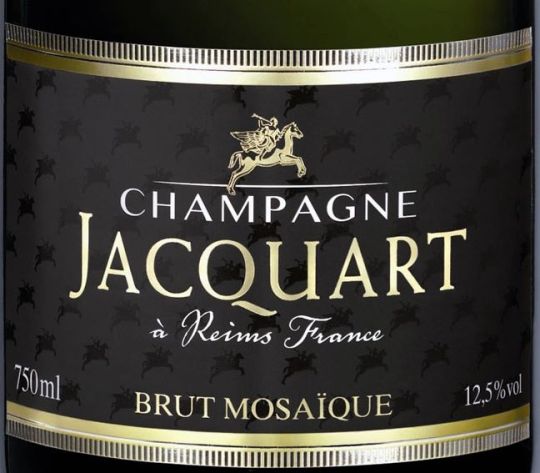
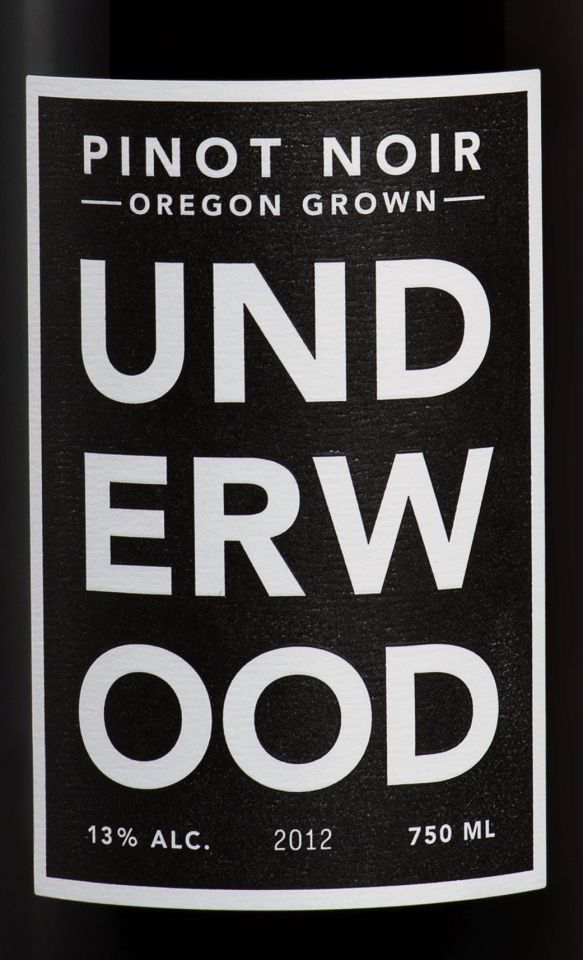


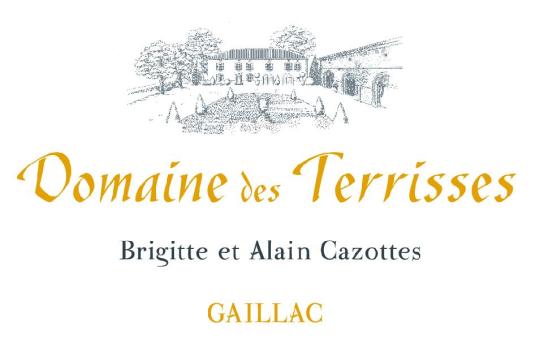

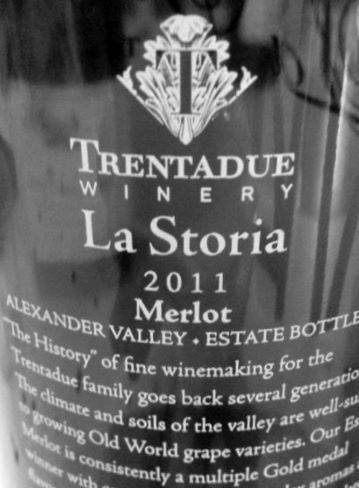

Tasting Recap: Movies and Wine
Wine tasting goes to the movies! That is what happened in our first Global Vineyard Passport Series tasting-eventwith Brandon Thomas. Brandon is acertified expert of wine, and you can follow his blog, here. In this tasting, Brandon paired scenes frommovies (and a serial) with varietals or regions featured in those scenes.
Wine is used in popular culture in myriad ways – often to express a mood or display a character’s traits. Much has been written lately about the portrayal of women drinking wine on-screen, and the connotations of their character as expressed by the color and size of the drink (e.g. here and here). For our tasting, Brandon selected six scenes that ran the gamut from timeless (Casablanca) to absurd (The Muppets), with romantic and unexpected stops along the way.
On to the tasting!
Champagne Jacquart Brut Mosaique Reims, France
“Mosaique" takes its name from the multiple plots, grapes, and vintages that comprise the wine. Jacquart sources grapes from vineyards of the Alliance Champagne group, of which Jacquart is the largest house. This wine is a blend of 40% chardonnay, 35% pinot noir, and 25% pinot meunier. It was produced in the methode champenoise, with secondary fermentation in the bottle. Aged for 3+ years in the bottle.
This is a great, minerally sparkler with small, persistent bubbles. There is lime zest on the nose, without noticeable breadiness (“brioche”). It has a fruit-forward quality – with pear, unripe stone-fruits, and more lime zest.
Casablanca: Ah, the elegance! Ingrid Bergman, Humphrey Bogart, Morocco… Buttheir hearts are elsewhere, and the romance and style of unoccupied Paris is setby the champagne and the coupes in which it is served.
The Muppets: When Miss Piggy and Kermit set out for a romantic night on the town, what could possibly go wrong? Well, Steve Martin in lederhosen and “Sparkling Muscatel. One of the Finest wines of Idaho.” We’ve had some great Idaho wine (and Jet sells on by the glass) but the lederhosen, the screw cap, the Muscatel, and Miss Piggy’s call with her agent all undermine the fine evening that a chilled bottle of sparkling wine had promised. We are sorry, Kermie.
Union Wine Company Underwood Pinot Noir 2012 Oregon
The Underwood is an attempt to make great Pinot Noir at an affordable price. To do this, grapes were drawn from across Oregon, including the Willamette Valley – well known for its warm days, cool evenings and maritime influence, and the Umpqua Valley – warmer, and near the Idaho border. The fermented juice is aged in French Oak for 6 months. Underwood Pinot Noir also comes in a can and, according to Brandon, is quite enjoyable that way.
The wine has a pretty, jewel-toned color. The flavors are bright, with some light berries and sour cherry notes. There is also a considerable earthy/funk on the nose, and the expected acid of pinot noir.
House of Cards: Frank and Clair Underwood are 2 stars of this political drama set in Washington DC. The two connive and manipulate during the day, and sit for a glass of Pinot Noir at night. Pinot has the cold austerity, aided by an acidic backbone, to bring these two together in the evening.
Chateau du Moulin Rouge 2011, Haut-Médoc, Bordeaux, France
The Chateau is an independent winegrower (Vigneron Indépendant) Haut-Médoc is a subregion of Médoc, and thus the Chateau is situated on Bordeaux’s Left Bank. Production is traditional, and has been for 13 generations. This wine is a blend of manually-harvested 50% Merlot, 40% Cabernet Sauvignon, and 10% Cabernet Franc, aged for 12 months in new, French Oak.
This wine is such a great combination of its main grapes. It has a smokey smoothness from the merlot and graphite sharpness from the cabernet. The nose has some brown sugar, and the mouth is full of cherry and plum.
Year of the Comet: Intrigue, subterfuge, secret identity… all in a race for a rare bottle of Bordeaux. Bordeaux is filled with some fine, fine wine – not all of which is identified with its own appellation – quite like this Haut Médoc. The “good guys” win in the end, espousing the notion that fine wine is meant to be enjoyed, not horded.
Domaine des Terrisses 2010 Gaillac, France
Domaine des Terrisses is a storied property that has been in the Cazottes family since 1750. The Domaine is located in southwest France, in the Gaillac appellation, where they grow traditional grapes. This wine is a blend of 50% Braucol (Fer Servadou), 30% Duras, and 20% Syrah. It is aged one year in tank before bottling.
This wine shows the iron-y and savory characteristics of the Fer Servadou grape. It is sharp and strong, with beef broth and spice in addition to the dark prune. I, for one, love Fer Servadou.
French Kiss: Meg Ryan puts aside her stereotypical distates and finds the earthy and traditional side of French life in its pastoral countryside. The wines of southwest France are rather unlike those from the rest of the country, embracing a more rustic and bold profile that lacks artifice.
Trentadue Winery La Storia Merlot 2011, Alexander Valley, California
While the Trentadue family has been growing grapes on this land for 55 years, the vineyards boast some vines that are 115 years old. The Merlot grapes in this wine come from their Alexander Valley estate in Sonoma.
This is a rich, smokey, velvety, gem of a wine. It has big, bright, cherry fruits, darker plums, and a touch of eucalyptus. It is wonderful to drink.
Sideways: Friends, Middle Age, Neuroses, Wine. Yes, the movie that made people eschew Merlot for years. With this Trentadue Merlot, however, it is not easy to maintain a dislike for the varietal!
Overall, this was a wonderful tasting and fun pairing of wines with movies. We always take a post-tasting poll for the favorite of the evening. Tonight's winner? The Trentadue Merlot, with 8 votes. This was followed by a tie between the Champagne and Bordeaux, followed by the Gaillac and then the Pinot Noir.
Join us for our Ides of March tasting on March 10th!
#Wine Tasting#Movies#Merlot#Sideways#trentadue#French Kiss#Gaillac#Domaine des Terrisses#Champagne Jacquart#Casablanca#The Muppets#Underwood Pinot Noir#House of Cards#Chateau de Moulin Rouge#Year of the Comet#Brandon Thomas
1 note
·
View note
Photo
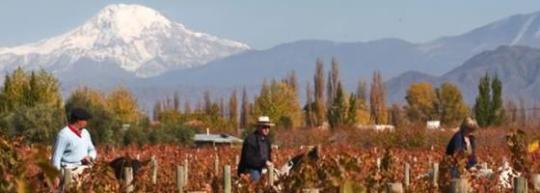



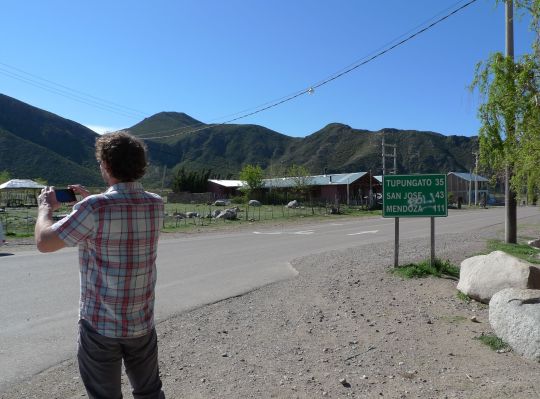

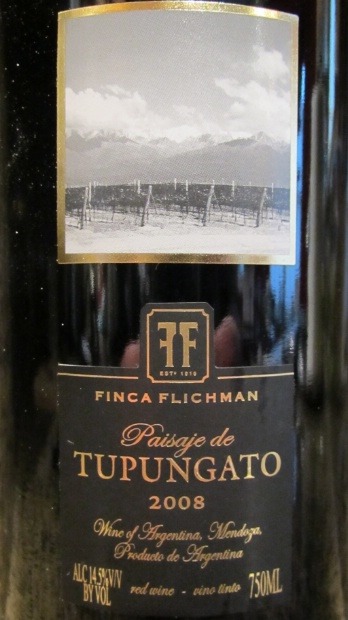
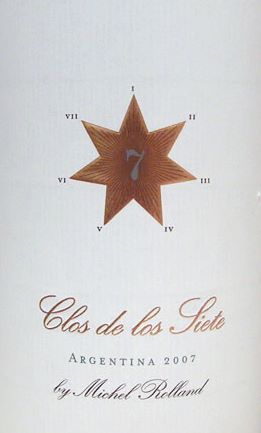

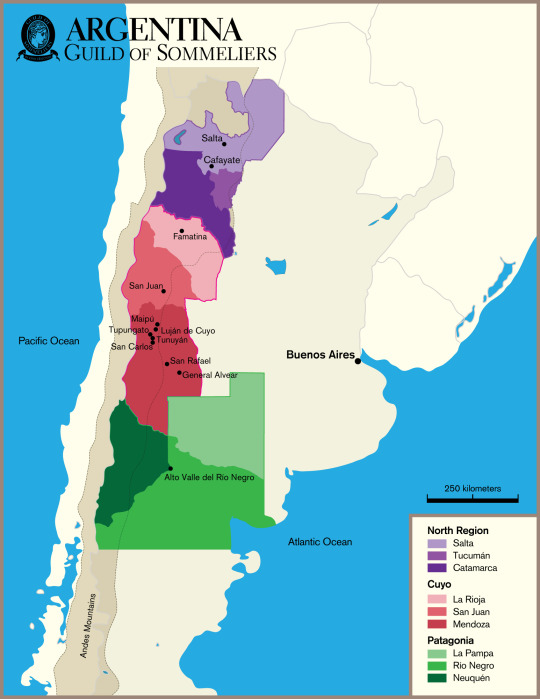
Recap: Wines of Argentina
Argentina is a big country, so obviously we did not taste all their wines! But, this installment of our Global Vineyard Passport Series explored five wines from Argentina’s big, bold, beautiful wine country.
As far as wine regions go, Argentina is relatively well-known. The fact that this tasting sold out in 48 hours suggests it is also well-liked. And why not? The country boasts the Andes mountains across nearly its entire north/south axis, separating it from Chile to the West. These mountains define Argentina as a country and heavily influence its wine production. Most wine regions range latitudinally along the Andes, from Salta in the North to Patagonia in the South, with Mendoza in between. The sun-drenched days contribute to the softer tannins and higher alcohol associated with many Argentine wines, while the cooling effects of higher-altitude plantings help in achieving more structured wines. Argentina's range of grapes and wine styles owe much to its immigrant past, particularly from Italy and Spain.
So, what do wines made from hot, dry vineyards in the foothills and the sun drenched valleys taste like? Our wine expert, Bob Barrett, brought us 5 great wines to help us figure that out.
**************************************************
What did we taste?
Nieto Senetiner Torrontes, Valle deCafayate, Salta
Nieto Senetiner Winery is an Argentine icon that dates back to 1888; its first vineyards were planted by Italian immigrants in Vistalba, Luján de Cuyo, in the province of Mendoza. Today, their 400 hectares of vineyards are still located in Luján de Cuyo. However, the Torrontes grapes for this wine are grown in the Cafayate Valley in the northern, Salta region, whose soils produce excellent Torrontes. 100% Torrontes from 20 year old vines.
This wine has a very floral nose – as expected from Torrontes. Notes of orange peel and lime. It has a lighter body, but with higher-than-expected acid and some pleasant waxiness in the mouth. This would make a great aperitif wine. Our tasters mostly enjoyed the wine for its fresh, sipping pleasure.
Crios Rosé of Malbec, Mendoza
Crios is a “fresh”line of wines from winemaker Susana Balbo, who has been making wines 3 decades. The vineyards are located in Agrelo & Ugarteche in Luján de Cuyo, at an average elevation of 3280 feet. The sustainably grown vines average 32 years of age and their grapes are hand-harvested. This Rosé of Malbec is produced using the traditional saignée method; while juice and skins fermenting to produce a dark, red wine, a portion of the juice is drained off while its color is still light and bright.
This wine has a bright, pink/ruby color. It has fresh but deep rose and strawberry notes, and a strong earthiness. It has a fuller body and drinks quite like a red. This would be perfect with a smoked salmon BLT! There was strong favor for this wine, though a few of our tasters wished to drink it warmer.
Finca Flichman Paisaje de TupungatoValley, Mendoza
Finca Flichman is an old winery, founded over 100 years ago in 1910. This wine is grown from grapes planted at an altitude of ca 3,900 feet, which benefit from hot and dry conditions during the day, tempered by much cooler temperatures at night. The winery, like so many in Argentina, is well-known for its Malbec. The Paisaje blend changes each vintage, but this is a blend of hand-picked grapes 70% Malbec, 25% Cabernet Sauvignon, and 5% Merlot. The wine is aged for 12 months in American (50%) and French (50%) oak barrels, and spends a further 6 months in bottle before release.
This blend has good, concentrated plum, raspberry, and blueberry fruits. It also has savory notes, with a hint of roasted-nut flavors. It has velvety tannins for a very smooth mouth. The alcohol, at 14.5%, is high – and tastes hot. This was enjoyed by all but one of our tasters, who found it harsh.
Clos de Los Siete, Mendoza
Clos de Los Siete is a collaborative effort between several French winemakers, including Michel Rolland – who is consultant for this wine. Their vineyards are in the Uco Valley near Tunuyan and the total enterprise (with six remaining of the original seven partners) cover 850 hectares at about 1100 meters altitude in the Andes foothills. This wine is a blend of five, manually-harvested grapes: 53% Malbec, 17% Merlot, 18% Cabernet-Sauvignon, 11% Syrah, 1% Petit-Verdot. The wine was aged for 11 months in French oak, and another 6 months in bottle before release.
This blend is rich, with super-concentrated fruits – especially blackberry. It is almost all fruit, with very little in the way of spice. It is fuller bodied. This wine was tasted with an audible, “aaaahhhh” from the group.
Domaine Bousquet Reserve Cabernet Sauvignon, Tupungato Valley, Mendoza
Domaine Bousquet is owned by French ex-pat, Jean Bousquet, who bought this land in 1988. The winery and vineyards are in the foothills of the Andes, inTupungato. At 4000 feet (1200 meters) this is one of the highest points in Mendoza. The wine is a blend with 85% Cabernet Sauvignon and 15% Malbec, Grapes are grown organically on 10 year old vines, and harvested manually. The wine is aged for 10 months in French Oak barrels, and another 4 months in bottle before release.
This wine is rich and full, with blueberry notes – a hint of candied fruit, and savory herbs. It has sharp tannins and some minerality. This was also a crowd pleaser!
**************************************************
The Results
This was another great tasting from Bob, who chose five, excellent and different wines. Our end-of-tasting poll was very close, with only the Torrontes receiving no votes (despite the fact that it was definitely enjoyed!). The winner was the Clos de Los Siete, with 7 votes. It was closely followed by Domaine Bousquet with 6 votes, while the Crios and Finca Flichman each received 4 votes.
It is with great sadness that we announce this is Bob's last regular tasting with us. We wish him well in his new endeavors and hope to lure him back for some extra-special tastings in the future!
Please join us for next tasting on February 17th with Brandon!
#Crios Rose of Malbec#Nieto Senetiner Torrontes#Finca Flichman Paisaje#Clos de Los Siete#Tupungato#Mendoza#Salta#Valle de Cafayate#Argentina
0 notes
Audio
What adventures this time? Jill & Phill chat about Jill's hometown, nestled in the Indiana Dunes. We also try a fantastic Barbera d'Asti from Canti, and learn Phill's take on "Continental". Yes, lots of laughs. Grab yourself a glass of wine and enjoy!
#Jill and Phill#time out with phillip silverstone#Brilliant Wine Sketch#Michigan City#Indiana Dunes National Lakeshore#Canti Barbera d'Asti#wining archaeologist
0 notes
Audio
We chat the beauty and wonder of Aleppo, Ice hotels... and wine! This time we try a sparkling Ribolla Gialla from the Veneto! and, Jill continues her gaffes by calling Slovenia Serbia!
#aleppo#ribolla gialla#South Italy Imports#Ice Hotel#phillip silverstone#time out with phillip silverstone#Jill and Phill
0 notes
Audio
Jill & Phill chat travel, food, and wine! In true Jill fashion, she gets the name of the excellent restaurant in Amsterdam WRONG! It is *Daalder* - not Daarden! and it was fantastic...
#Amsterdam#Tangent Sauvignon Blanc#Daalder#hotel v nesplein#Jill and Phill#time out with phillip silverstone
0 notes